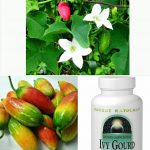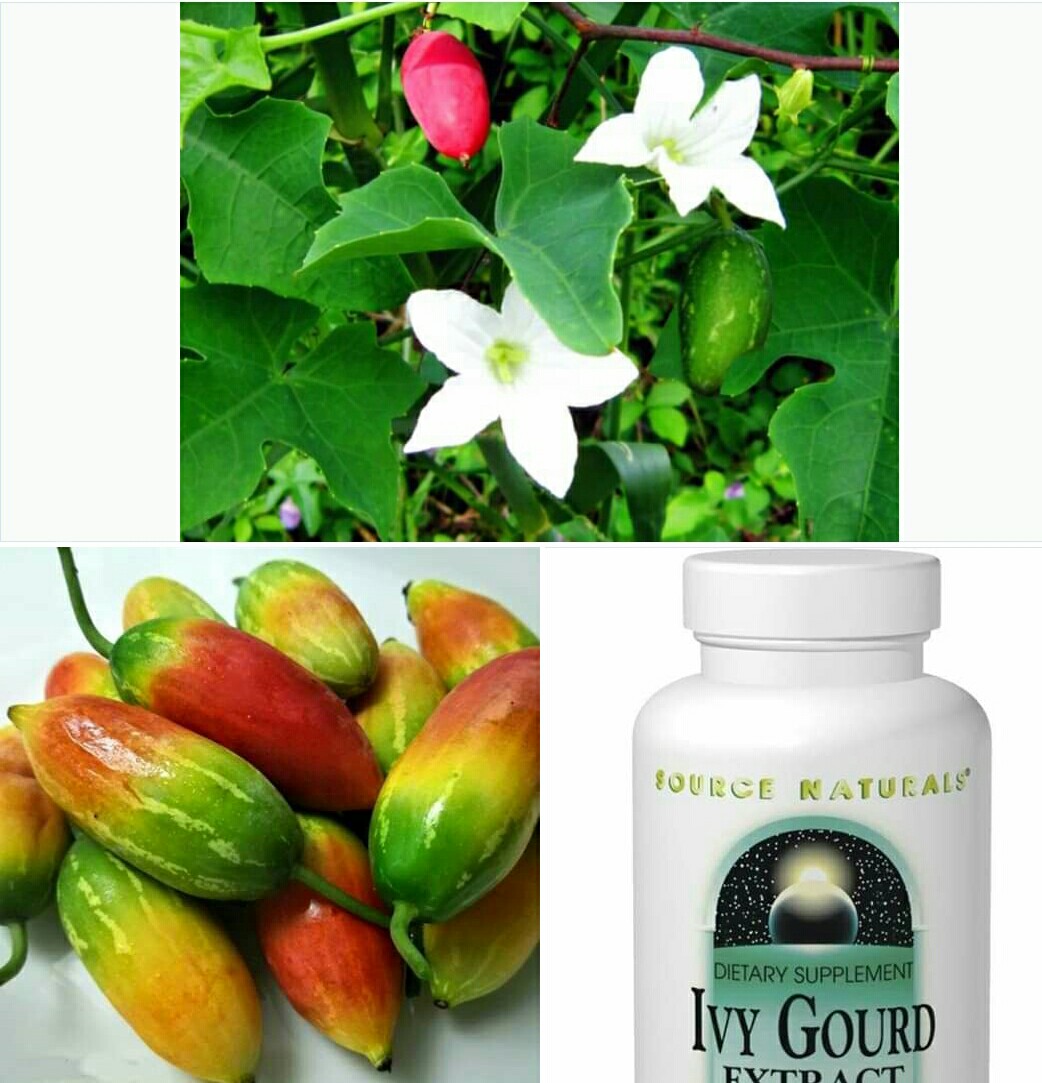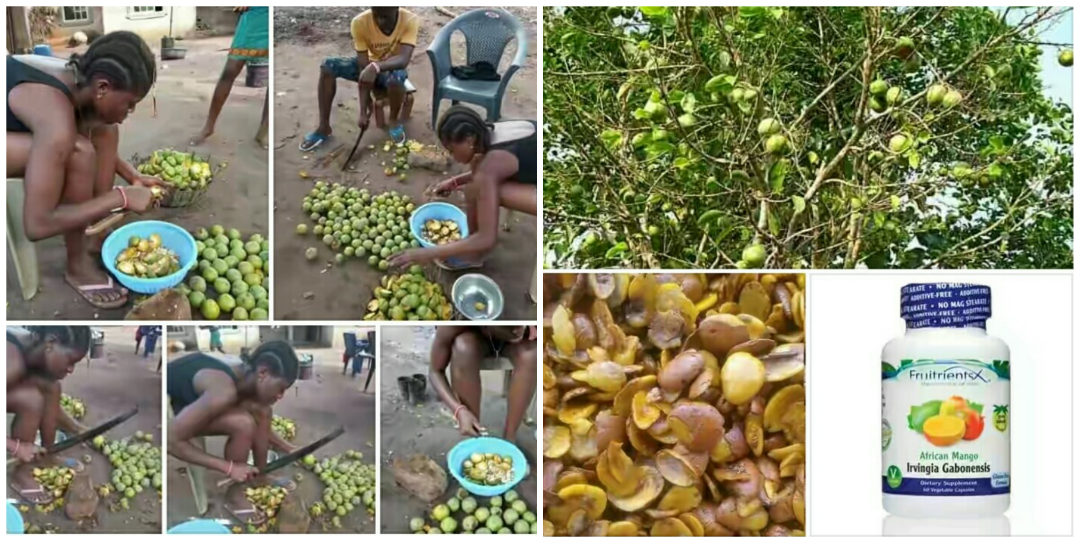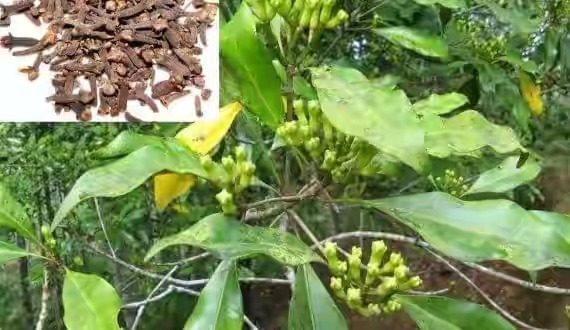Coccinia grandis (botanical name) or Ivy gourd, Scarlet-fruited gourd, Tindori, Baby watermelon, Little gourd, Gentleman’s toes (English) or Gujin Daji, Gwanduwa (Hausa): An underutilized perennial, climbing herb as a vegetable and medicinal plant
DESCRIPTION AND OCCURRENCE: Coccinia grandis is a perennial, glabrous, climbing herb or trailing vine with glabrous stems and tuberous roots. It is a fast-growing perennial vine that grows several meters long.
It can form dense mats that readily cover the shrubs and small trees. Its leaves are arranged alternately along the stems; they vary from heart to pentagon shape and are up to 10 cm wide and long. The upper surface of the leaf is hairless, whereas the lower surface is hairy. There are about 3-8 glands on the blade near the leaf stalk. Tendrils are simple.
The plant is dioecious (male flowers are produced on separate plants to female flowers). Flowers are large, white and star-shaped. The calyx has got five subulate, recurved lobes, each 2-5 mm long on the hypanthium; and the peduncle is 1-5 cm long.
The corolla is campanulate, of white color, 3-4.5 cm long, and is well divided into five ovate lobes. Each flower has got three stamens (present as staminodes in female flowers).
The ovary is inferior. The fruit becomes red (when ripe), ovoid to elliptical, 25-60 mm long, 15-35 mm in diameter, and hairless on stalks 10-40 mm long.
Seeds are tan-colored and 6-7 mm long. The roots and stems are succulent and possibly enables the plant to survive prolonged drought.
Coccinia grandis occurs wild from Senegal east to Somalia and south to Tanzania; also in Saudi Arabia, Yemen and India. It is locally naturalized in Mozambique and Mauritius and has been introduced in many other tropical and subtropical regions.
It is considered an invasive, obnoxious weed in Australia, Florida and the Pacific Islands, e.g. Hawaii. It is cultivated in Asia from India to Indonesia.
In East Africa, especially in Kenya, it is cultivated mainly for consumers of Indian origin and exported to the UK.
Nutritional value and health benefits of Coccinia grandis (Ivy gourd)
Ripe red fruit of sweet-tasting cultivars are eaten raw, or they are peeled and cut into pieces and prepared as a stew with onions and tomatoes. Other vegetables may be added such as garden egg, bottle gourd, ridge gourd, okra and pulses. Meat is added when available.
The dish may be served with bread, sorghum or any other starchy food. The dish is known in East Africa as ‘tindori’. Immature green fruits are prepared in soups and curries and widely used in this way in Ethiopia and India. Cultivars with bitter fruits are mainly used for their leaves and shoots.
Such shoots are especially popular in Thailand where they are eaten as a fried or boiled vegetable. The leaves are also eaten as a vegetable by the Mursi people in Ethiopia.
The seeds are chewed in Ethiopia and Kenya, but they are discarded in West Africa and Uganda. Per 100 g edible portion, the fruits contain: water 93.5 g, energy 75 kJ (18 kcal), protein 1.2 g, fat 0.1 g, carbohydrate 3.1 g, fibre 1.6 g, Ca 40 mg, P 30 mg, Fe 1.4 mg, thiamine 0.07 mg, riboflavin 0.08 mg, niacin 0.7 mg, ascorbic acid 1.4 mg.
The fruits, stems and leaves have medicinal uses such as to reduce high blood pressure and to treat abscesses. Roots are believed to heal illnesses associated with endocrine system disorders such as diabetes mellitus, and are used in Niger to treat intestinal troubles.
Bronchial inflammation, respiratory mucosae and skin disorders are also said to be healed by this plant. In some communities in India, ivy gourd is cultivated as a medicinal plant. The plant has also been used tremendously in Ayurvedic and Unani practice in the Indian subcontinent.

Every part of the plant is beneficial in medicine and also in various preparations that have been mentioned in the indigenous system of medicine like the anti-inflammatory, analgesic and anti-pyretic activity (lowering body temperature) of fruit and leaves has been studied so far and are found to be noteworthy. In India, the whole plant can be traditionally used for various curative purposes.
Leaves are used in Indian traditional medicine for treatment of a number of maladies including diabetes, wounds, ulcers, inflammation, in eruptions of the skin, fever, asthma, and cough.
Scientific investigations of coccinia grandis have shown that the crude plant extract has hepatoprotective (liver protection), antioxidant, anti-inflammatory and anti-nociceptive (pain killer), anti-diabetic, hypolipidemic, antibacterial, and anti-tussive activities (prevent or relieve a cough).
Goats, sheep, cattle, donkeys and camels eat the plant.
These are the thoughts of:
Sa’eed Halilu Bawa
Senior Lecturer (Associate Professor) at University of the West Indies, St. Augustine Campus, Trinidad.
Studied Food and Nutrition Sciences, Dietetics at Kaduna Polytechnic, Nigeria; Warsaw University of Life Sciences, Poland.
























